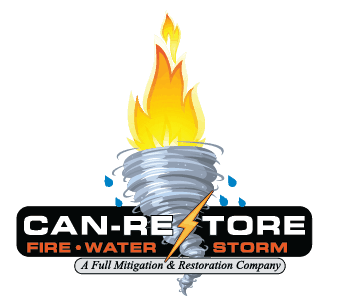Is effective smoke odor removal really that big of a deal after a fire?

Getting a Grip on the Reality of Smoke
Smoke is made up of a combination of solid, liquid, and gas particles that become airborne during a fire. It’s a byproduct of the fire and it contains elements of the fuel that was burned. Each type of fire creates a different type of smoke.
If a pile of wood burns, the resulting smoke is going to consist of that organic material, but if a house full of plastics and synthetic materials (which is the case with most homes) the smoke and soot will contain those elements. As you can imagine, the synthetic fuel creates a much stronger, more pungent smell, and the residue is much stickier and harder to remove, so the smell can be even more challenging to get rid of.
Steps to Effective Odor Removal
There is a fine art to getting rid of the smell from smoke damage. Because fire smoke can be so tricky and so specific to the type of fire, it’s good to have a general overview of the process before moving on.
Step 1: Ventilation and Air Movement
You want to get the bad air out and the good air in. Ventilation is key, but it’s just the start. The proper way to get the smokey air out of your home is with positive air pressure. A restoration company will come in with industrial fans and set up your home or the rooms affected in such a way that creates a positive pressure to quickly move the air out of your home and replace it with fresh air. But there’s so much more.
Step 2: Removing Fabrics and Textiles
Removing fabric for cleaning is the next step. This includes upholstered furniture, drapes and curtains, linens, bedding, and clothing. Getting them out of the house gets them out of the way for the rest of the cleaning process, but it also allows for them to be properly cleaned and deodorized before they’re brought back to the house.
Step 3: Soot and Residue Cleaning
Cleaning up the soot and residue takes special knowledge and the right tools and products. Because different soot has different properties, you need the right type of chemical sponges, cleaning products, and protective gear, because it’s so corrosive and harmful.
Step 4: Air Purification and Ozone Generation
Using high quality air purifying systems combined with professional ozone generators, restoration companies can take this final step to getting the smoke odor cleared out of your home.
While many homes can have air purifiers, only professionals should use ozone generators, as they can be dangerous and harmful to your health if used improperly. But if used for smoke odor removal, it can rid the air of the particles that create the lingering smoke odor because they continue to circulate and settle on surfaces.
The primary concern when it comes to smoke damage and the odor that goes with it is effective treatment and cleanup. Following the steps to get it done the right way is the best way to take back your home after a fire.
If you’ve had a fire and you’re facing extensive smoke damage, contact Can-Restore for help with effective smoke odor removal by calling (770) 735-2695 or by clicking this link.

